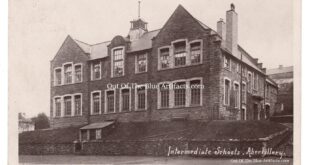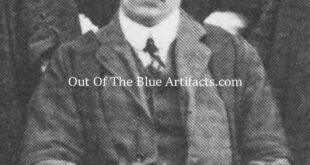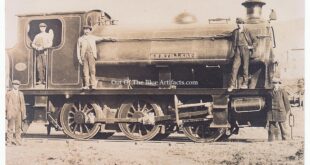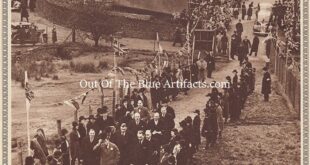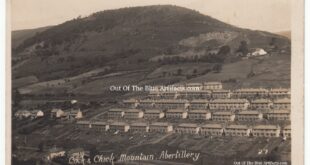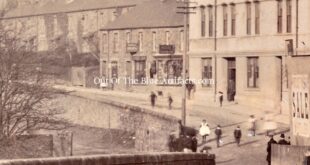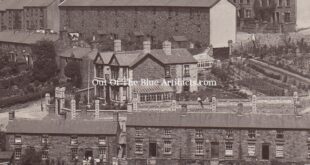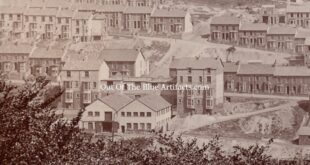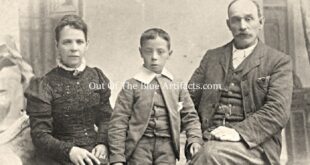The Old Tyleryan’s Association. The Old Tyleryan’s Association Society was formed in February 1901. It began as an association to keep a bond of union amongst the old pupils of the Intermediate School, County School, Abertillery. Mr W. D. Lewis Evans the headmaster was its (President), Miss Tongue of Blaina as (Treasurer) and Mr A. W. Box of Oak Street, …
Read More »General History
Mr W. D. Lewis Evans – Headmaster of the Intermediate County School Abertillery
Mr W. D. Lewis Evans. Mr W. D. Lewis Evans was born in 1871 at Cardiganshire, the son of John and Martha Evans. He was educated at Conwil Cayo Elementary School, Llansawel Grammar School and Ardwyn Secondary School at Aberystwyth. Mr Lewis Evans then proceeded to University College of Aberystwyth. He had a distinguished university career, obtaining his B.A. (London), …
Read More »Abertillery Intermediate School and Clyn Mawr
Abertillery Intermediate County School – Circa 1905. The image shows the area of Clyn Mawr with the original Abertillery Intermediate County School opened on Wednesday 19th of January 1898, extended and reopened on Wednesday 20th of December 1911. Points of Interest – At the bottom are the newly built houses of Glandwr Street. Two blocks of the Wooden Houses …
Read More »The Monmouthshire Railway and Canal Company
The Railway Story, a Brief History. From the late 18th century coal and iron was taken from the workings in the valleys by pack-mules to the various canals for transportation to the docks. By the early 19th century more collieries in the form of coal levels were opening out in the top end of the valleys and the use of trams …
Read More »King Edward VIII at Abertillery
King Edward VIII at Abertillery. In November 1936 King Edward VIII announced he would visit the district during a two-day official tour of South Wales. On Wednesday 18th of November, the first day’s tour would begin at Llantwit Major and end at Penrhiwceiber with the route through Merthyr Tydfil. On Thursday 19th of November, the tour would begin at Llantarnum, …
Read More »The Rose Heyworth Housing Scheme – Rose Heyworth Road, Smith Road and Morley Road
Rose Heyworth Housing Scheme. The Rose Heyworth Housing Scheme was being debated as early as 1901, a few years later the planning was given and the go-ahead was given by the council as part of the “Housing for the Working Classes Programme” within the Housing for the Working Classes Act Part III. Two fields at Clyn Mawr were being laid …
Read More »Oak Street Cottages – Abertillery
Oak Street Cottages – Abertillery. The main image (featured above) taken sometime between 1905 and 1920 shows the Station Hotel, rebuilt in 1902 by Mr Noel Bagley, contractor of Oak Street, Abertillery and the 3 attached cottages which at the time this image was taken belonged to Mr D. W. Morgan, the South Wales Argus Offices of Newport and Messrs …
Read More »Mr Samuel Mills
Mr Samuel Mills. Mr Samuel Mills was born in 1846 at Avening, Gloucestershire, England. He later married Elizabeth (no maiden name available) also from Avening, Gloucestershire and moved to the South Wales Valley’s to work at the collieries. In January 1876 the first branch of the Independent Order of the Rechabite Association was established at Abertillery, the branch was called …
Read More »Alexandra Skating Rink – Six Bells
The Alexandra Buildings Skating Rink and Cinema. The Alexandra Buildings (as seen in the middle of the main featured image above) were constructed by Messrs Skidmore and McWhirter in the early 1900’s on the south side of Alexandra Road, between the road and the back lane at Six Bells. Messrs Skidmore & McWhirter. Mr Edward Skidmore and Mr Peter …
Read More »Mr James McBean – Surveyor for the Abertillery Local Board and District Council
Mr James McBean. Mr James McBean was born in 1849 at Beauly, Invernesshire, Scotland, the son of Mr John McBean a publican and auctioneer. Mr James McBean was educated at Inverness and later apprenticed to surveying at Wrexham. He joined the Royal Engineers and became a surveyor in the Ordnance Survey department. Moved to Haverfordwest with the Royal Engineers ordnance-survey, …
Read More » Out Of The Blue Artifacts A Library of a lifetime of collecting
Out Of The Blue Artifacts A Library of a lifetime of collecting
